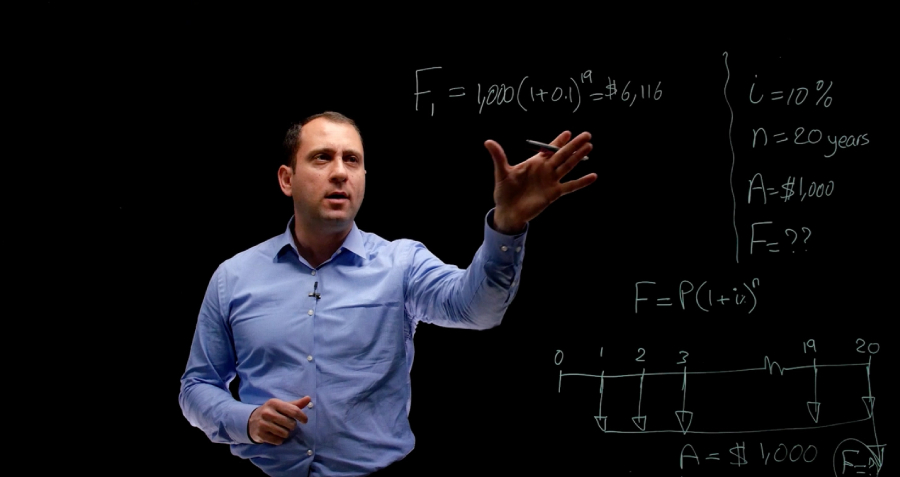Elena L. Botelho, co-author of the best-seller The CEO Next Door and a partner at leadership advisory firm ghSMART, explains why people misunderstand what it takes to get to the corner office
Many people aim to climb the corporate ladder even though the responsibilities of a CEO are immense, and their failures can be embarrassingly public. What does it take to become the CEO of a top company or simply advance to your full potential professionally?
Endless business magazine profiles and hagiographic biographies reinforce the tropes of the corporate high-flier: charismatic, manically committed, out-of-the-box thinker. It all suggests that unless you can measure up to Richard Branson, do not even bother applying. But Elena Botelho says that conventional wisdom and larger-than-life public profiles are misleading.
For more than 10 years, Botelho has led a study into what it takes to get to the top and succeed called the CEO Genome Project, working with ghSMART’s database of 18,000 C-level executive assessments and 13,000 hours of interviews. Her conclusion, as she and co-author Kim Powell set out in their book, The CEO Next Door, is that “much of what we hear about who gets to the top, and how, is wrong.”
In this interview, Botelho shares the four behaviors that differentiate successful CEOs and can help anyone accelerate their career.
Q. In The CEO Next Door, you say that conventional wisdom about who makes it to the top is incorrect. How are we getting it wrong?
A. We think we know the leaders of today. We read about them in the paper, we see their presences online—they are very much in the public eye. But in fact, what we know about them is only skin deep. We have access to their public profiles, and we are fed representations of them so they either get idealized or get demonized. I believe that power always fascinates, but does not attract a great deal of fact, so leadership is often shrouded in myths such as “to be a successful leader, you need to be a charismatic extrovert.”
However, when we looked at the data that we collected that idea falls apart. Seventy percent of CEOs did not set a goal to become a CEO until much later in their tenure, which is great news for those currently at different levels in their careers. Surprisingly, the data also revealed that charismatic extroverts did not have any performance advantage over other personality types. There are in fact many introverted leaders that have built up a tremendous followership.
Conventional wisdom is dangerously wrong as it causes the wrong leaders to be chosen for top roles. Even more damaging is that it causes many talented future leaders to assume that top leadership ranks are not for them because few people see themselves in these larger-than-life, picture-perfect images.
Q. The creation of the CEO Genome Project database was no small feat. How did it come about?
A. ghSMART has been in the leadership advisory business since 1995. Leading industrial boards and CEOs rely on our firm to help them select, groom and coach potential leaders. So, all data used in the book and in our research is data from companies we worked with and the same data our clients relied on to make key decisions. We are able to help companies predict a candidate’s performance with about 90% accuracy.
For every executive recorded in the data set, we have a minimum of six hours’ worth of data and analysis on their entire career, their behavior, the results they have achieved, their motivations and the career choices that they made. In some cases, it is supplemented with predicted data on the executive as well. So, the depth of that data is unique, while most leadership research or research on CEOs is limited to the public profiles of Fortune 500 CEOs.
The breadth of the data is distinctive as well, as it covers many companies of various sizes, in every industry code. Our data set is more heavily focused on companies in the United States, but about 15%-20% of it has been sourced from international teams.
Q. The book argues that the key to becoming a successful CEO is following four behavioral traits. What are these?
A. An easy way to remember them is through the acronym DARE. “D” stands for decisiveness, “A” stands for adapting proactively, “R” for relentless reliability, and “E” for engaging for impact.
The interesting thing about decisiveness is that we imagine successful CEOs to be able to make better-than-average decisions. We assume that it is about quality—that they are able to be more exact in their decision making that others. What surprised us when we ran the analysis of the data was that what really sets CEOs apart is the speed of their decision making. These people are often quick to make decisions, often from a young age.
When it comes to adapting proactively, many assume that strong adapters are just those that have a natural talent for predicting what the future holds. What is interesting is that when we assessed CEOs on how adaptable they are, one of the features that set them apart was that they were willing to let go of the past even while it was still profitable. There are a lot of companies that do not adapt, precisely because their human habits or business processes are linked to the old way of doing business, and so they allow themselves to become obsolete. The leaders who stood out for their proactive adaptability were those who were willing to challenge themselves before it was too late.
We have had about 17,000 people take an online self-assessment tool used to assess these four behaviors, and reliability has consistently been the lowest scored behavior. So, while being reliable may sound simple, it is actually hard. These four behaviors are associated with high performance, and what’s fascinating is that only reliability can double your chances of getting the job. It is therefore arguably the most powerful behavior, and one that we can all improve on.
Finally, engaging for impact is about asking yourself who your stakeholders are, engaging with them and asking how you are going to work with them to move your enterprise toward the objectives that you have. Leadership is about getting results—not necessarily being liked.
Q. Do you think the keys to success as a CEO are changing due to shifts in technology?
A. I would say that technology is improving transparency but also increasing noise levels, which affects how a leader performs. In the book, we give the example of how United Airlines mishandled a passenger. In the past, only other passengers would have witnessed it. But now, in an instant it is transmitted to the entire world, leading United Airlines to lose nearly $1 billion in market value as a result. Improved transparency also creates a higher bar for leaders, so that they must be even more decisive, adaptable, reliable and able to engage in the right way.
At the same time, technology can better support these behaviors. CEOs today have faster, more insightful tools to support their decision making and better processes and technology to rely on to build an organization. Technology is raising the stakes. Boards expect CEOs to be technology-savvy no matter the industry.
Q. What common mistakes do CEOs make that harm their performance?
A. One of the common pitfalls that leaders at every level struggle with is ensuring that they have got the right team around them. CEOs must consider how well their team is spread out to achieve the objectives that have been set. It is important to not just accept the team as is, but to think about what skills are needed to deliver on the organization’s expectations. Seventy-five percent of CEOs we interviewed admitted that their number one mistake was when it came to this.
Q. What advice would you give an ambitious MBA student on how they can quickly climb the career ladder?
A. I would recommend them to excel in their current role and to start practicing the four behaviors. To consistently excel reveals reliability. Be someone that everyone can always count on and great things will happen.
In the book, we talk about three sets of career accelerators, which helped leaders become CEOs faster than average. The book explores three career catapults that all involve risk-taking. It is natural to be afraid to make a mistake, but it is important to not only deliver results, but to have the visibility that is needed to move up quickly.
Q. The CEO Next Door says that for people looking to advance their careers, “sometimes it is better to go small in order to go big.” Could you unpack what you mean?
A. “Go small to go big” is one of the three career catapults. When we analyzed CEOs that got to the top faster, about 60% had an experience in their career that at the time looked like they were taking a step backward. An example is someone leaving a headquarters job at a big-name company to run an underperforming division, or someone that was given an HR function that was not considered a high-pedigree role.
Typically, these roles come up because there is a problem that needs solving. They may look unglamorous, but they provide a degree of freedom to step up and take a greater level of responsibility. That is why these “go small to go big” catapults are so effective, because in a smaller environment you often have a bigger opportunity to prove yourself at an early age.
Q. Are there people that you would recommend not to pursue the corner office?
A. Being a CEO is not for everyone. There are many ways to have tremendous impact on the world. If you do not like to be counted upon by others, then being a CEO is not for you. Leadership is really about others counting on you to take them places that they would not manage on their own. While the position may look like it is the main person in charge all the time, their role is ultimately about being responsible toward others. If the primary motivation behind being a leader is for personal advancement or a sense of glory, it will be a painful task to accomplish.
Q. Did your research reveal differences between male and female executives in terms of the career paths or the behavioral traits that they display?
A. What we found in our research is that when comparing candidates that have equal levels of capability, women were less likely to get the job. We also found that the four behaviors apply across genders. If you look closely at a leader’s style, there is often a greater difference between how two male or two female leaders lead than the difference between leaders of the two genders. While women may go about things differently or while it may look different, fundamentally high-performing female or male CEOs are highly-decisive, adaptable, reliable and engage for impact. It is important to note that women and minorities do face unique obstacles on their way to the top, including higher hurdles and challenges. In the book we touch on some of these and ways to overcome them.
Q. Where do you plan to take your research on executives next?
A. Our focus now at ghSMART is to use the results with boards and CEOs, to allow for its full impact. CEOs and boards bring us in to help them get full benefit from the lessons in the book. We want to help leaders become even more successful in their organizations. In terms of future research, we will also be doing further analyses on women.





















